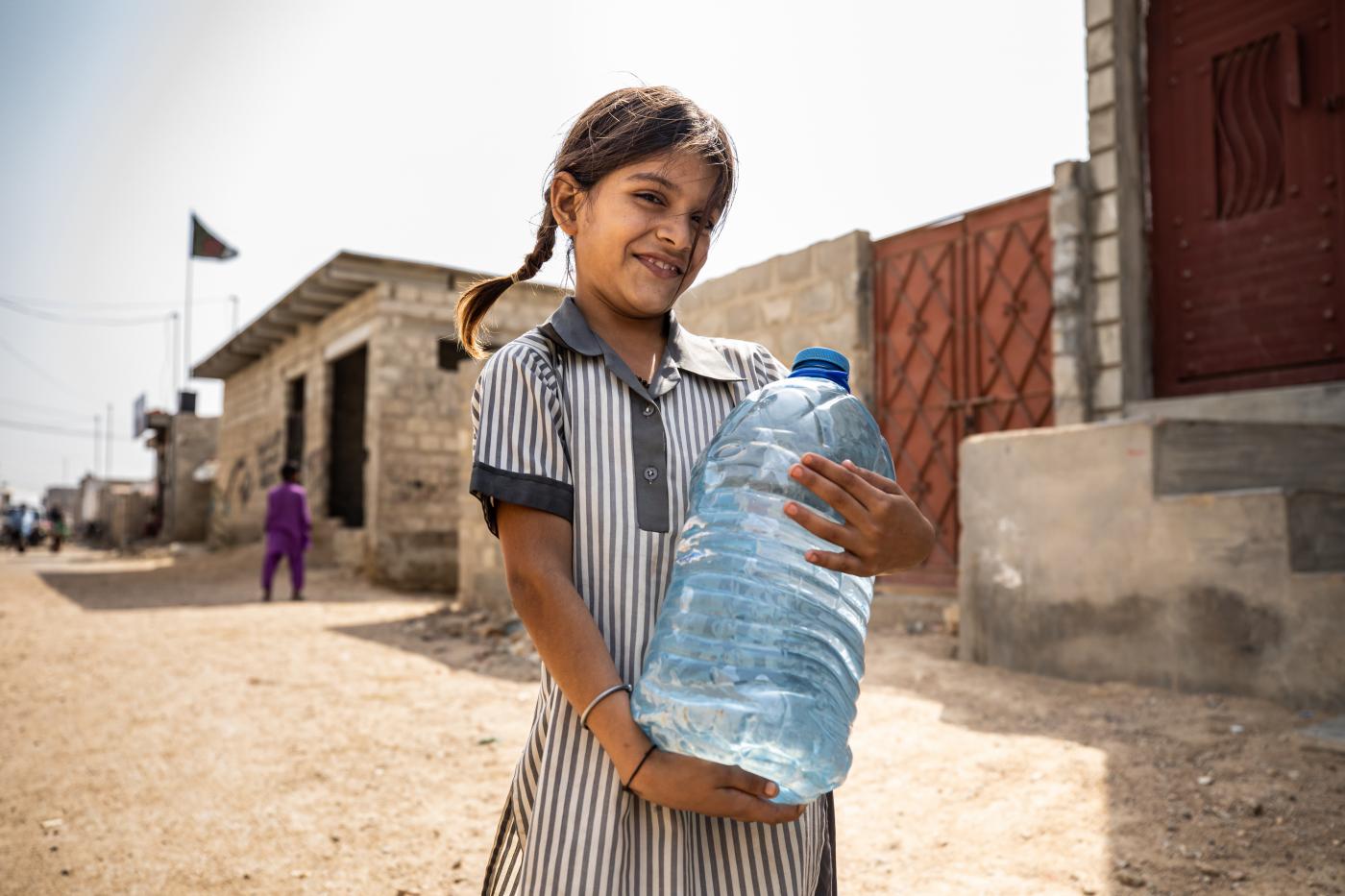 Khadim Solangi Goth, a community on the outskirts of Karachi, Pakistan, sits in one of the last remaining polio reservoirs on the planet. More than 40,000 people live in improvised dwellings made of earth or other found materials. For some, a cotton sheet is all that protects them from the hot sun and monsoon rains. “The poorest of the poor are living in this area,” says Asher Ali, the project manager for the Pakistan PolioPlus Committee. In Pakistan, 53,000 children under age 5 die each year from diarrhea caused by contaminated water.
Khadim Solangi Goth, a community on the outskirts of Karachi, Pakistan, sits in one of the last remaining polio reservoirs on the planet. More than 40,000 people live in improvised dwellings made of earth or other found materials. For some, a cotton sheet is all that protects them from the hot sun and monsoon rains. “The poorest of the poor are living in this area,” says Asher Ali, the project manager for the Pakistan PolioPlus Committee. In Pakistan, 53,000 children under age 5 die each year from diarrhea caused by contaminated water.Polio is especially resilient in this community, which has been one of the most resistant to eradication efforts; the Global Polio Eradication Initiative (GPEI) has designated Khadim Solangi Goth one of its highest-priority areas. And the Pakistan Polio Eradication Initiative classifies Gadap Union Council 4, the administrative district that the community is a part of, as “super high risk.”

